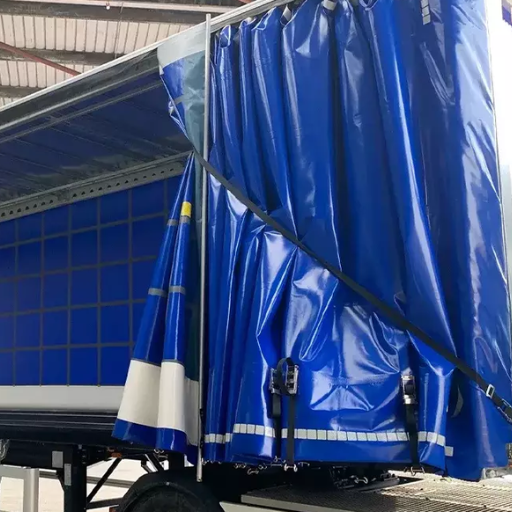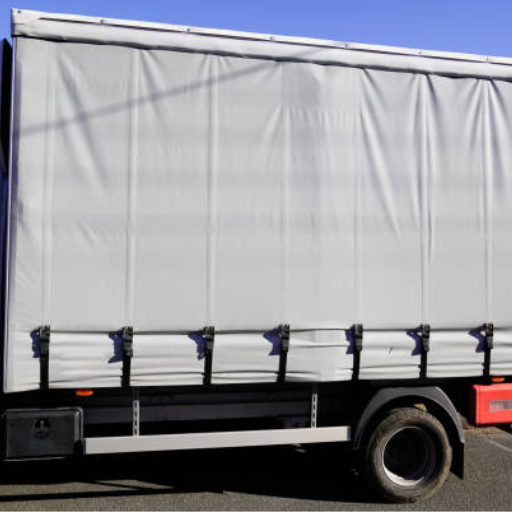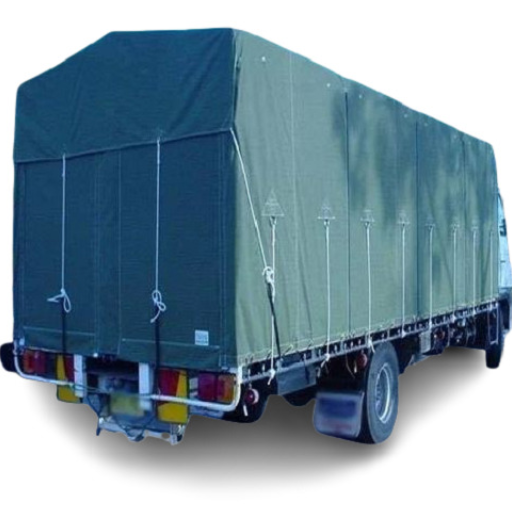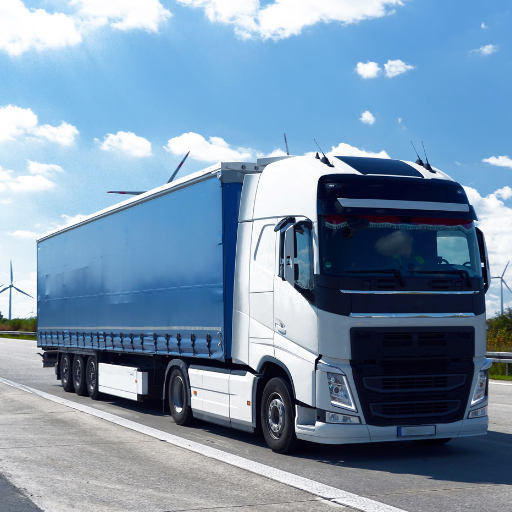Transporting goods can be a challenging endeavor, especially when it comes to ensuring that your cargo remains secure and shielded from unpredictable weather conditions, road debris, and other environmental factors. That’s where high-quality truck tarpaulins come into play. Whether you’re hauling construction materials, agricultural products, or fragile goods, selecting the right tarpaulin is essential to safeguarding your load and maintaining its condition throughout the journey. This article dives into the world of truck tarpaulin solutions, exploring their key features, benefits, and how to choose the perfect option for your specific needs. https://chenlaiplastics.com/truck-tarpaulin/
What Are the Different Types of Truck Tarps?

Every type of truck tarps is specially crafted to cater to different types of cargo, fulfilling diverse needs of protection. The most recognizable types are:
Flatbed Tarps – These are general purpose tarps that can be used to cover loads on flatbed trucks to protect them from the weather and any debris.
Lumber Tarps – As the name suggests, these are used for carrying lumber and have flaps that cover the sides and ends for tall loads.
Steel Tarps – These are lighter and thinner than lumber tarps and are ideal for covering lower profile loads such as steel rods or sheets.
Mesh Tarps – Used in the transportation of rubbish, gravel or landscape material, these tarps providec ventilation while holding the load tight.
Smoke Tarps – Used to cover the front part of the load, these tarps protect the cargo from dirt, wind, and exhaust while smoky tarps takes care of the dirt.
Exploring Heavy Duty Tarpaulin Options
When considering heavy-duty tarpaulin options, it’s essential to focus on factors like material durability, resistance to weather conditions, and application suitability. Here’s a concise breakdown to guide your selection:
Material and Strength – Heavy-duty tarps are commonly made from materials like polyethylene, vinyl, or canvas. Polyethylene offers lightweight waterproofing, vinyl excels in tear resistance and durability under extreme weather, and canvas is breathable, ideal for applications where moisture control is important.
Weather Resistance – Look for tarps with UV protection, mildew resistance, and waterproof or water-resistant coatings to ensure longevity when exposed to harsh weather conditions. For cold environments, reinforced tarps are recommended due to added flexibility.
Sizing and Customization – Heavy-duty tarps are available in a range of standard sizes but can also be customized to fit specific needs. Custom sizing is beneficial for covering irregularly shaped objects or ensuring full coverage for large-scale applications.
Multi-Purpose Applications – These tarps can cover and protect construction equipment, agricultural supplies, vehicles, or even outdoor event spaces. Their versatility makes them suitable for industrial, commercial, and personal usage.
Key Considerations – Before purchasing, assess tear resistance, grommet spacing, edge reinforcements, and ease of securing to maximize functionality and minimize wear over time.
Benefits of Using Mesh Tarps for Ventilation
Mesh tarps are specifically designed to offer superior airflow while still providing shade and protection. Their porous design allows for ventilation, preventing the buildup of heat and moisture in covered areas, making them ideal for use in agriculture, construction, or recreational settings. Additionally, they reduce wind resistance, ensuring better stability when used in outdoor conditions. Mesh tarps are highly durable and lightweight, crafted to resist tearing and UV degradation, which extends their lifespan. These versatile tarps also strike a balance between privacy and airflow, making them suitable for fencing or enclosure applications. By providing effective ventilation and reliable performance, mesh tarps are a valuable solution for environments requiring constant air circulation and partial protection.
Choosing Canvas Tarps for Durability
Canvas tarps are renowned for their exceptional durability and versatility, making them an ideal choice for heavy-duty applications. Constructed from thick, tightly woven cotton material, these tarps are resistant to wear and tear, making them suitable for long-term use in demanding environments. They are naturally breathable, which helps to prevent condensation buildup, making them an excellent option for protecting moisture-sensitive items such as machinery, furniture, or agricultural products. Additionally, canvas tarps are treated to enhance water resistance, mildew prevention, and UV protection, ensuring reliable performance under various weather conditions. With their rugged design and eco-friendly composition, canvas tarps are a sustainable and durable solution for both residential and industrial needs.
How Does a Truck Tarpaulin Cover Protect Cargo?

A truck tarpaulin cover protects cargo by shielding it from external elements such as rain, wind, dust, and harmful UV rays. Made from durable, weather-resistant materials, these covers create a barrier that prevents damage caused by moisture or debris during transit. They also help stabilize the load by keeping it securely covered, reducing the risk of shifting or loss. This ensures that the cargo remains intact and arrives at its destination in optimal condition.
Understanding Waterproof and UV Resistant Features
Waterproof and UV-resistant features are essential for ensuring the longevity and reliability of covers and other protective materials. Waterproofing prevents water penetration by using tightly woven fabrics or specialized coatings, such as polyurethane or PVC, to create a water-repellent surface. This is crucial for protecting cargo and equipment from rain, snow, and humidity, reducing the risk of rust, mold, or material degradation.
UV resistance, on the other hand, refers to the material’s ability to withstand prolonged exposure to ultraviolet rays from the sun. Materials designed with UV-resistant properties often incorporate additives, like UV inhibitors, during the manufacturing process to block or absorb harmful rays. This prevents fading, cracking, and weakening of the material over time, ensuring durability and performance under intense sunlight. When combined, these features provide a robust defense against diverse environmental challenges, safeguarding both the material and its contents effectively.
Ensuring Durability in Various Weather Conditions
Ensuring long-term durability in various weather conditions requires a balance of advanced material design and preventive measures. Start by selecting weather-resistant materials, such as stainless steel, treated wood, or UV-stabilized plastics, which are engineered to endure extreme environments. Coatings, like anti-corrosion layers and waterproof sealants, play a critical role in shielding structures from moisture, rust, and UV degradation. Regular maintenance, including cleaning, resealing, and inspections, is essential to identify and address wear before it escalates. Furthermore, incorporating design features like proper ventilation, drainage systems, and thermal barriers can mitigate the harmful effects of fluctuating temperatures, heavy rainfall, or intense sunlight.
Importance of Reinforced Seams and Grommets
Reinforced seams and grommets are critical for ensuring durability and functionality in tarps, tents, and other weather-resistant materials. Reinforced seams enhance the overall strength of the fabric, preventing tearing and fraying under tension or pressure, particularly in high-stress areas. Similarly, grommets—especially those made of brass or stainless steel—provide durable anchoring points, reducing strain on the surrounding material and maintaining structural integrity during use. Proper reinforcement of these components ensures better performance in harsh conditions, prolongs the lifespan of the product, and reduces the risk of failure when reliable protection is needed most.
What Should You Consider When Choosing a Flatbed Truck Tarp?

When choosing a flatbed truck tarp, it’s essential to prioritize durability, material quality, and functionality. Look for tarps made from heavy-duty materials like vinyl or polyethylene to ensure resistance against harsh weather, abrasions, and UV rays. Consider the size and fit of the tarp to ensure full coverage of your load, preventing cargo shifts or exposure. Additional features, such as reinforced grommets, double-stitched seams, and heavy-duty D-rings, enhance the tarp’s ability to withstand prolonged use and challenging conditions. Finally, evaluate your specific hauling needs—whether it’s lumber, steel, or machinery—to select a tarp with appropriate weight, flexibility, and ease of handling.
Determining the Right Size and Width
Selecting the correct size and width of a tarp is essential to achieving optimal coverage and protection for your cargo. Start by measuring the length, width, and height of your cargo to determine the total coverage area required. Ideally, the tarp should be slightly larger than the dimensions of your load to ensure complete coverage, especially in harsh weather conditions or during transport. Pay attention to the drop size, which accounts for how much of the tarp hangs over the sides, ensuring a secure fit. When in doubt, opt for a tarp with adjustable features like grommets or straps, which provide flexibility for different load sizes and shapes. By accurately matching the tarp dimensions to your cargo, you enhance not only durability but also ease of use and safety.
Comparing Vinyl vs. Polyester Fabrics
When comparing vinyl and polyester fabrics, I first consider their durability and use cases. Vinyl tarps are highly durable, waterproof, and well-suited for heavy-duty applications, such as protecting industrial equipment or construction materials. They’re resistant to tearing and UV damage, making them ideal for prolonged outdoor use. On the other hand, polyester tarps are lightweight, affordable, and great for general-purpose coverage. While they’re not as tough as vinyl, they offer decent resistance to water and work well for lighter loads or temporary shelter. Ultimately, I base my choice on the specific needs of the job – if I need long-lasting protection against harsh conditions, I go for vinyl; for everyday, lightweight tasks, polyester does the trick.
Assessing Weight and Resistance Needs
When determining the right tarp for your needs, it’s essential to balance weight and resistance requirements. Heavier tarps, such as vinyl, generally provide superior durability, puncture resistance, and weather protection, making them ideal for industrial use or demanding outdoor environments. However, their weight can make handling more challenging. Lighter tarps, like polyester, offer convenience due to their manageable weight while still providing reasonable water resistance, though they are less robust in extreme conditions. Consider the task at hand—whether it’s safeguarding construction materials, creating a temporary shelter, or covering equipment. For heavy-duty, long-term applications, prioritize durability and resistance, whereas for short-term or less demanding uses, a lightweight option can suffice without excessive cost.
How Do You Properly Install and Secure a Truck Tarp?

To properly install and secure a truck tarp, follow these steps:
- Position the Tarp: Place the tarp evenly over the truck’s cargo, ensuring it fully covers the load. Adjust it to prevent wrinkles or slack, as this can lead to wind damage or shifting during transit.
- Secure the Tarp Anchors: Attach the tarp’s grommets or hooks to the truck’s anchor points. Begin by fastening opposite corners to keep the tarp in place and then secure the remaining points systematically.
- Tighten the Tarp: Use ropes, bungee cords, or ratchet straps to pull the tarp taut. Ensure it is tight enough to prevent flapping while still avoiding overstress, which could damage the tarp.
- Double-Check: Once secured, inspect all fastenings to confirm nothing is loose. Make sure the edges of the tarp are firmly tied to prevent wind penetration and protect the load from exposure.
Using Grommets and Straps for Securement
When using grommets and straps to secure a tarp, start by threading the straps through the grommets located along the edges of the tarp. Opt for durable, weather-resistant straps with adjustable buckles to ensure a snug fit. Pull the straps taut, but avoid excessive tension that could tear the grommets or the tarp material. Fasten the straps to sturdy anchor points, such as hooks or tie-down rings, ensuring they are evenly distributed to prevent shifts or imbalances during transport.
For optimal security, check that all straps are properly tightened and positioned at equal intervals. Cross-pattern securing can enhance stability and reduce the risk of wind-catching or movement. Regularly inspect the grommets and straps for wear, replacing any damaged components promptly to maintain safe and efficient securement.
Common Mistakes to Avoid During Installation
Uneven Strap Placement
One common error is placing straps haphazardly, resulting in uneven tension and poor load balance. Ensure straps are evenly spaced and follow proper securing techniques such as cross-pattern arrangements for maximum stability.
Overtightening or Undertightening
Straps that are overtightened can damage the items being secured, while straps that are too loose increase the risk of load shifting during transport. Always aim for a firm and consistent tension without excessive force.
Ignoring Wear and Tear
Using straps with frayed edges, rusty grommets, or compromised components significantly increases the risk of failure. Regular inspections should identify damage early, and any worn parts should be replaced immediately.
Failure to Perform Load Tests
Skipping a test tug or pull to verify the straps’ hold on the load may result in unintended loosening during transit. After installation, double-check all fastenings and simulate movements to ensure everything is securely in place.
Incorrect Strap Angle
Securing cargo at improper angles reduces the strap’s effectiveness and stability. Straps should ideally create tight, linear tension across the load to prevent shifting or imbalance.
Why Are Heavy Duty Tarps Essential for Transportation?

Heavy duty tarps are essential for transportation because they provide reliable protection for cargo against weather elements, such as rain, wind, and sun, which could otherwise damage goods. Their durable, tear-resistant material ensures that loads remain securely covered during transit, preventing shifting or exposure. Additionally, they help maintain compliance with safety regulations by properly securing loose or hazardous items, reducing the risk of accidents. These tarps are a cost-effective and practical solution for safeguarding a variety of cargo, from fragile supplies to bulky equipment.
Enhancing Load Security During Haul
To enhance load security during transportation, it is crucial to employ a multi-faceted approach. Start by utilizing the right equipment, such as high-quality ratchet straps, bungee cords, corner protectors, and heavy-duty tarps, to firmly secure your cargo in place. Load distribution plays a pivotal role—ensure weight is evenly spread across the vehicle to prevent tipping, shifting, or imbalance during transit. Regularly inspect your restraint systems for wear and tear, replacing any compromised components immediately for optimal safety.
Additionally, adhering to industry regulations is key. Familiarize yourself with local and national transportation guidelines for securing various types of loads, including weight limits and tie-down requirements. Proper documentation, such as load manifests, helps track inventory and ensures compliance. Finally, a pre-haul checklist and post-haul reviews can identify gaps in your load security strategy, improving future hauls and minimizing risks.
Providing Protective Barriers Against Environmental Factors
Shielding cargo from environmental elements is critical to maintaining its condition and value throughout transportation. Proper protective barriers, such as tarps, plastic wraps, and waterproof coverings, can safeguard goods from rain, heat, and debris. Selecting barriers that are durable and appropriate for the cargo type ensures the best defense against environmental stressors. Additionally, climate-controlled units or insulated containers can be utilized for temperature-sensitive items, maintaining consistent conditions throughout the haul. Regularly inspecting and replacing worn or damaged protective materials further guarantees the effectiveness of these measures, preventing unnecessary losses and delays.
Customizing Tarpaulins for Specific Cargo Needs
Custom tarpaulins can be designed by choosing the correct materials, sizing, and features appropriate to the specific cargo. For example, delicate or temperature-sensitive goods require the use of PVC or polyethylene tarpaulins with insulation. These materials protect against moisture and UV rays, temperatures, weather, and extreme temperatures. Furthermore, everyday coatings such as fire resistance and waterproofing increase durability while specific coatings tailored to the goods enhance safety.
Irregularly shaped or oversized loads are fitted custom tarpaulins with reinforced edges, heavy-duty grommets, or adjustable side straps to ensure snug fit through their entire transit. Clear labeling or color-coding enhances the ease of identifying and organizing the goods. Tarpaulins can be relied on for a variety of transport over time provided their routine maintenance is upheld.
Frequently Asked Questions (FAQs)
Q: What are the primary benefits of using trailer tarps for cargo transport?
A: Trailer tarps are designed to provide water resistance and protection for your cargo during transport. They help keep your load secure from weather elements like rain, wind, and dust, ensuring that your goods remain in high quality condition throughout the journey.
Q: How do I choose the right tarp for my dump truck?
A: When selecting a tarp for your dump truck, consider the size of your truck bed, the type of material you need (such as poly or PVC), and the level of water resistance required. Premium, waterproof heavy duty tarps are ideal for long-lasting protection.
Q: What makes lumber tarps suitable for flatbed trailers?
A: Lumber tarps are specifically designed for flatbed trailers, with features like reinforced corners and brass grommets to ensure secure fastening. They offer durable protection for lumber and other freight, shielding them from environmental damage.
Q: Are there lightweight tarps available for truck covers?
A: Yes, lightweight tarps are available, often made from high quality materials like 18 oz PVC. These tarps provide excellent protection while being easy to handle and install, making them a favorite among truckers.
Q: How does a waterproof truck canopy benefit outdoor cargo storage?
A: A waterproof truck canopy is ideal for outdoor cargo storage as it provides a protective cover against rain, sunlight, and other environmental factors. This ensures that your goods remain dry and in good condition.
Q: What are the advantages of using a factory-made tarp?
A: Factory-made tarps are typically crafted with precision and high quality standards, ensuring reliable performance. They are often made with durable materials and designed to withstand harsh conditions, offering a premium solution for cargo protection.
Q: Can semi-trucks benefit from using tarps?
A: Absolutely, semi-trucks can greatly benefit from using tarps. They help in securing the freight, protecting it from weather conditions, and ensuring compliance with transport regulations regarding cargo security.
Q: Are there tarps specifically designed for pickup trucks?
A: Yes, there are tarps specifically designed for pickup trucks. These truck covers are tailored to fit the dimensions of a pickup bed, providing protection against weather and road debris.
Q: What role do brass grommets play in trailer tarps?
A: Brass grommets are essential for trailer tarps as they provide reinforced points for securing the tarp to the trailer. This ensures that the tarp remains securely fastened during transport, preventing damage to the cargo.